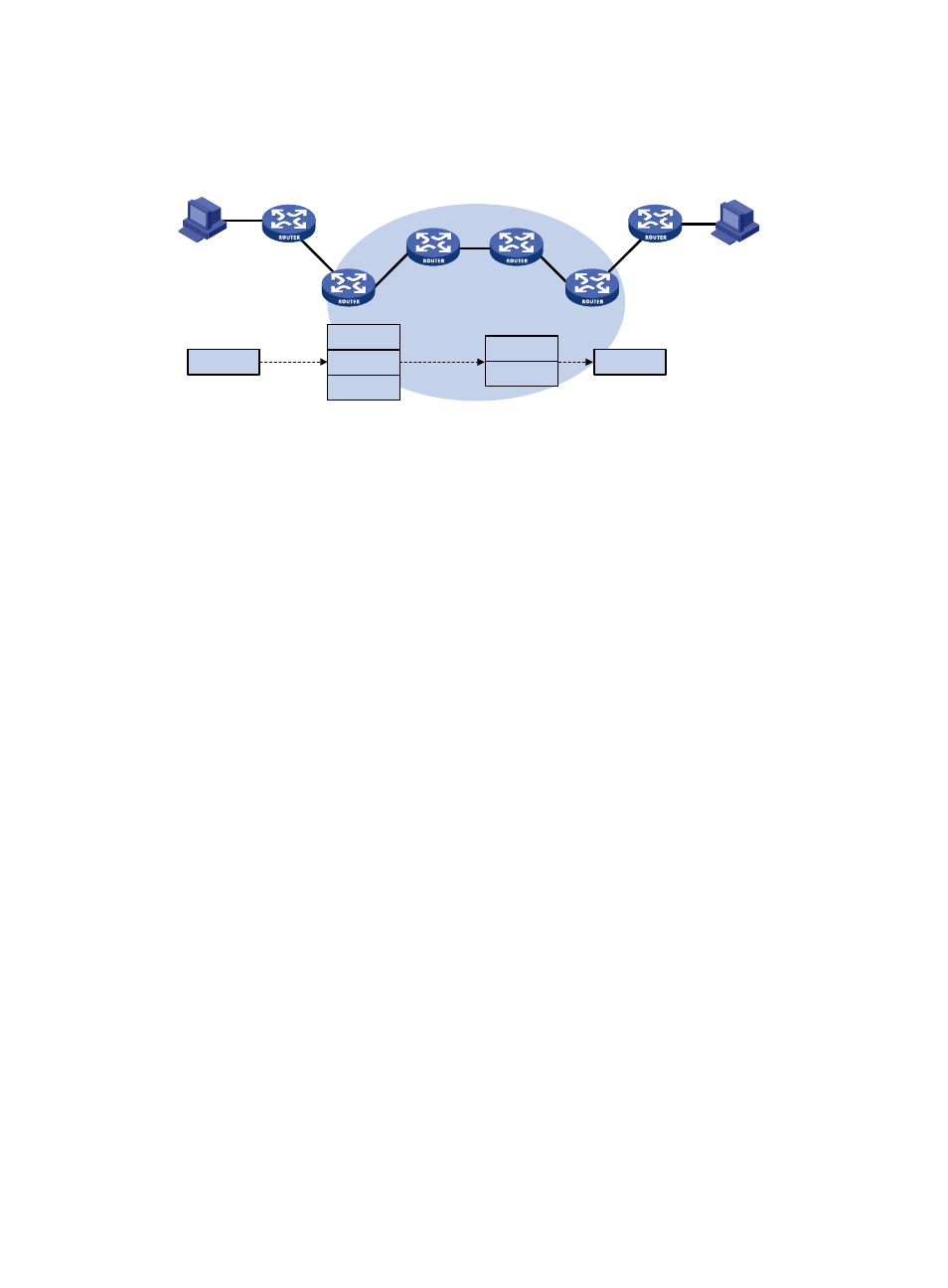Ipv6 mpls l3vpn packet forwarding, Ipv6 mpls l3vpn routing information advertisement – H3C Technologies H3C SR8800 User Manual
Page 361

350
IPv6 MPLS L3VPN packet forwarding
Figure 86 IPv6 MPLS L3VPN packet forwarding diagram
As shown in
, the IPv6 MPLS L3VPN packet forwarding procedure is as follows:
1.
The PC at Site 1 sends an IPv6 packet destined for 2001:2::1, the PC at Site 2. CE 1 transmits the
packet to PE 1.
2.
Based on the inbound interface and destination address of the packet, PE 1 searches the routing
table of the VPN instance. Finding a matching entry, PE 1 labels the packet with both inner and
outer labels and forwards the packet out.
3.
The MPLS backbone transmits the packet to PE 2 by outer label. The outer label is removed from
the packet at the penultimate hop.
4.
According to the inner label and destination address of the packet, PE 2 searches the routing table
of the VPN instance to determine the outbound interface and then forwards the packet out the
interface to CE 2.
5.
CE 2 forwards the packet to the destination by IPv6 forwarding.
IPv6 MPLS L3VPN routing information advertisement
The IPv6 VPN routing information of a local CE is advertised to a remote peer PE in three steps:
1.
From the local CE to the ingress PE.
2.
From the ingress PE to the egress PE.
3.
From the egress PE to the remote peer CE.
Then, a route is available from the local CE to the remote CE.
Routing information exchange from the local CE to the ingress PE
After establishing an adjacency with the directly connected PE, a CE advertises its IPv6 VPN routes to the
PE.
The routes between a CE and a PE can be static routes, RIPng routes, OSPFv3 routes, IPv6 IS-IS routes,
or EBGP routes. No matter which routing protocol is used, the CE always advertises standard IPv6 routes
to the PE.
Routing information exchange from the ingress PE to the egress PE
After learning the IPv6 VPN routes from the CE, the ingress PE adds RDs and VPN targets for these
standard IPv6 routes to create VPN-IPv6 routes, saves them to the routing table of the VPN instance
created for the CE, and then triggers MPLS to assign VPN labels for them.
CE 1
Site 1
PE 1
P
P
PE 2
CE 2
Site 2
2001:1::1/96
2001:2::1
2001:2::1
Layer2
Layer1
2001:2::1/96
2001:2::1
Layer2
2001:2::1